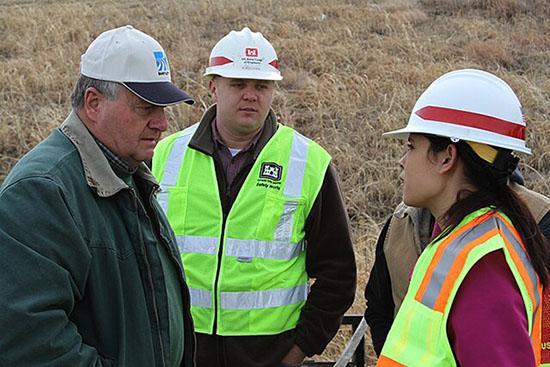The U.S. Army Corps of Engineers has a long and storied history dating back to the American Revolution. Over more than two centuries, the Corps has been involved in some of the most ambitious infrastructure and construction projects in the United States and around the world. From designing fortifications during the Revolutionary War to modern-day disaster response efforts, the Corps has continually adapted its missions to serve the evolving needs of the nation. This article explores the origins, major projects, wartime contributions, and modern roles of this versatile military engineering organization.
The Beginnings: Revolutionary War and Early Years
The Corps traces its roots to the American Revolution and the need for military engineers to support the Continental Army. In 1775, the Continental Congress recognized the necessity of technically trained engineers who could build fortifications and provide other engineering services. A chief engineer and two assistants were appointed, marking the establishment of a Corps of Engineers. The small size of this original Corps reflected the limited number of engineers in the colonies at the time.
Over the next few decades, the Corps continued to grow, though on a small scale. After the Revolutionary War, Congress reorganized the unit as the Corps of Artillerists and Engineers in 1794. Despite its new name, the Corps remained focused on engineering duties including the construction of coastal fortifications. In 1802, Congress passed legislation formally establishing the Corps of Engineers as its own permanent branch within the U.S. Army. The new Corps was headquartered at the recently established United States Military Academy at West Point, which began educating and training new generations of Army engineers.
Improving Transportation and Infrastructure
In the first half of the 19th century, the Corps of Engineers played a pivotal role in the expansion and development of the nation’s infrastructure and transportation systems. One of the Corps’ major assignments was surveying, planning, and constructing new canals to facilitate transportation and commerce. Notable canal projects included the Chesapeake and Ohio Canal linking Washington D.C. to the Ohio River, as well as the 267-mile Erie Canal connecting the Hudson River to the Great Lakes.
Along with canals, the Corps improved roads, harbors, and navigation channels across the country. For instance, they cleared harbors and snags from major waterways like the Mississippi River to enable steamboat travel. The Corps also oversaw the construction of one of the nation’s earliest railroads, the Baltimore and Ohio Railroad completed in 1830. Through these transportation projects, the Corps of Engineers helped open up opportunities for trade and economic growth as the nation pushed westward.
The Mexican and Civil Wars
When war broke out between the United States and Mexico in 1846, the Corps faced new demands for their engineering expertise. They were tasked with planning and building fortifications, depots, and roads to support American campaigns into Mexican territory. The Corps also helped capture and occupy Mexico City and other strategic locations.
The Corps went on to play an even larger role during the American Civil War from 1861 to 1865. Union forces greatly benefited from the skills of Corps engineers, who were critical for constructing fortifications and other field works. This included building pontoon bridges, laying telegraph wire, and erecting shelters and storage. The Corps enabled mobile operations by repairing or building new railroads, bridges, and roads as the troops advanced. Their contributions were essential in key campaigns like the siege of Vicksburg and Sherman’s March to the Sea.
The Growing Nation and World War I
After the Civil War, the Corps resumed their peacetime efforts to develop America’s infrastructure. They planned and supervised construction of critical dams, locks, levees, and other water resource projects across the country. With their expertise in hydrology and flood control, the Corps enabled settlement and agriculture in previously uninhabitable parts of the country. They also facilitated navigation on major waterways through improvements like locks on the Mississippi and Ohio Rivers.
When the United States entered World War I in 1917, the Corps leveraged their civil engineering expertise for military projects. They built major port facilities to receive troops and supplies in locations ranging from Norfolk, Virginia to Manila in the Philippines. Other stateside projects included military bases, warehouses, hospitals, and training camps. These massive construction efforts enabled the wartime mobilization of millions of American soldiers and resources. The Corps emerged from World War I with an even greater reputation for efficiently executing complex engineering projects.
Multipurpose Waterway Development and World War II
In the 1920s and 1930s, the Corps focused heavily on developing multipurpose water projects aimed at both navigation and flood control. Using their technical knowledge, the engineers conceived of ambitious systems that could tame floodwaters while also enabling river navigation with locks and dams. This ushered in an era of unprecedented multipurpose waterway development including the landmarks like the Bonneville Dam completed in 1937. The Corps also developed the intracoastal waterways along the Atlantic and Gulf Coasts during this period.
World War II beginning in 1941 brought new challenges and demands. As in World War I, the Corps utilized their expertise in logistics, construction, and engineering to mobilize troops and equipment. They worked closely with contractors to build military bases, airfields, hospitals, and storage depots at an astonishing rate and on a massive scale. These facilities were essential for training, preparing, and deploying millions of military personnel across the world’s theaters of war. The Corps also developed innovative portable infrastructure like the acclaimed Bailey bridge that enabled rapid deployment.
Responding to Natural Disasters and Environmental Challenges
After World War II, the Corps became increasingly involved in disaster response and recovery projects within the United States. Their specialized engineering capabilities made them an invaluable resource when major floods, hurricanes, fires, and other disasters occurred. Some examples include rebuilding after Hurricane Betsy in 1965, responding to the Exxon Valdez oil spill in 1989, and operating shelter systems following Hurricane Katrina in 2005. The Corps manages planning, supplies, coordination, damage assessments, and other logistics during emergency events.
In addition to disaster response, the Corps branched into environmental engineering and restoration projects starting in the 1970s. They have worked on high-profile efforts to restore the Florida Everglades wetlands and study impacts of climate change. Sustainability is also incorporated into their activities like dam operations and flood risk reduction. Overall, the Corps has needed to expand their focus to deal with environmental challenges unimagined during their early history. However, their technical expertise is well-suited to taking on these complex assignments.
Modern Missions: Civil Works, Military Construction, and International Operations
Today, the U.S. Army Corps of Engineers handles a diverse array of civil works, military construction, and global operations. On the civilian side, the Corps continues to manage commercial navigation, flood and storm damage reduction, and environmental projects across America. Ongoing civil works programs maintain vital infrastructure like locks, dams, levees, reservoirs, and navigation channels. The Corps also continues its traditional role in emergency response and disaster recovery during events like hurricanes and floods.
For the military, the Corps oversees design and construction of facilities needed by all branches of the service. This includes everything from army barracks to air force hangars to marine bases. These projects provide essential infrastructure and training capacity domestically and abroad. The Corps puts its expertise in contract management and engineering project execution to work in support of national defense priorities.
Internationally, the Corps shares its technical knowledge through global engineering support and capacity building. Currently, they have specialists working in dozens of countries on infrastructure development, disaster preparation, and engineering education. They also provide emergency support internationally during events like typhoons, earthquakes, and tsunamis. Whether domestically or around the world, the U.S. Army Corps of Engineers stands ready to leverage their expertise however needed.
Over more than two centuries, the U.S. Army Corps of Engineers has continually adapted to serve the engineering needs of a growing and changing nation. From the battlefields of the Revolutionary War to the environmental initiatives of today, the Corps has shown remarkable versatility. They have planned and constructed iconic infrastructure projects while also demonstrating agility in times of war and disaster. The Corps’ history provides a model of a military organization that has constantly evolved its missions to apply specialized expertise wherever the nation requires. As America’s needs shift in the 21st century, the U.S. Army Corps of Engineers will continue serving as an integral engineering arm ready to meet whatever challenges arise.










